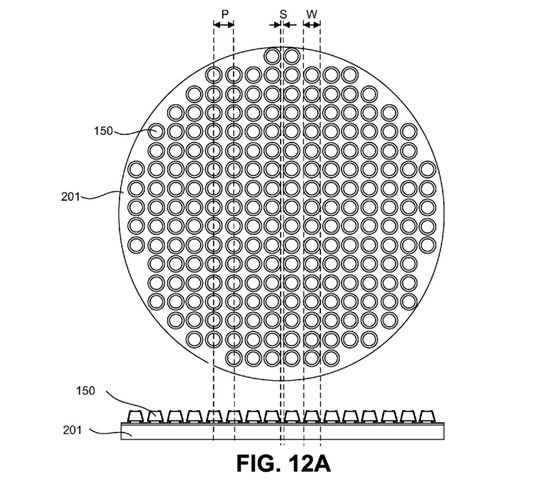Opportunities and challenges for Apple's layout of micro LEDs
The market expects that organic light-emitting diode (O LED ) panels will replace liquid crystals and become the mainstream products of smart mobile phone panels. Under the leadership of Apple, the O LED market is becoming more and more popular. At the same time, the industry is also closely watching Apple's next-generation display technology "Micro LED", which is expected to surpass OLED to subvert the existing display technology and expand the application of higher-level technology. Acquired LuxVue Technology and launched patent technology layout Micro-LED display technology has been developed for many years, until Apple acquired the US MicroLED display technology company LuxVue Technology, which triggered the market's keen interest. Founded in 2009, LuxVue develops low-power Micro LED display technology for consumer electronics and has raised $43 million in three rounds of financing. KPCB, a well-known venture capital firm in the United States, is one of its investors. John Doerr, a partner of the company, once said that LuxVue's display technology is unique. Taiwan's panel maker AUO, IC design factory MediaTek and Qijing Optoelectronics have both Holding LuxVue shares, and then taking advantage of LuxVue's acquisition by Apple. Apple took advantage of the Micro LED technology owned by LuxVue. In May 2014, it confirmed the acquisition of LuxVue and obtained a number of patented technologies for Micro LED . Since then, it has continued to lay out relevant technology patents. By integrating LuxVue technology, Apple is expected to increase screen brightness for its wearable devices, mobile phones and other products, and reduce battery energy consumption, extend battery life, and expand innovation possibilities for hardware devices. ▲Micro LED array structure diagram (Source: USPTO) However, Apple's performance on the acquisition of LuxVue was quite low-key. In addition to refusing to disclose the details, it also responded with a consistent official statement, indicating that Apple acquired small startups from time to time and usually did not explain the purpose of the acquisition or plan. At the end of 2015, media sources pointed out that Apple set up a laboratory in Taiwan's Longtan Science Park, mainly to develop MicroLED display technology, trying to seize the leading role of a new generation of displays to reduce dependence on Japanese and Korean panel factories. However, the news seems to have become a "secret that cannot be said" in the industry and has not yet been confirmed. Micro LED display technology has advantages, integrated sensor expansion application Micro LED is a miniaturized LED array structure with self-luminous display characteristics. Each pixel can be individually driven to emit light. The advantages include high brightness, low power consumption, small size, ultra high resolution and color saturation. Degree and so on. Compared with the OLED technology, which is also a self-luminous display, the Micro LED is not only efficient, but also has a long life. The material is not easily affected by the environment and is relatively stable. It also avoids image sticking, but the softness and flexibility are inferior. OLED. Some wearable display devices on the market affect the sharpness due to low brightness, and must improve the pull-up efficiency. However, the lower efficiency of the OLED will increase the power consumption. The MicroLED can be brighter than the OLED under the same power consumption. More than double. Dr. Fang Yanxiang, manager of the Micro-Assembly System Department of the Institute of Electro-optics, Institute of Industrial Technology, said that after research and analysis, ITRI thinks that Micro LED is more suitable for wearable products than OLED. After the former technology matures, the price is relatively more competitive. force. Wearable devices are inextricably linked to the Internet of Things (IoT). In response to future trends, wearable devices are bound to integrate more sensors, and space requirements are greater. Fang Yanxiang pointed out that OLEDs must closely arrange R, G, and B sub-pixels to improve efficiency, and the sensors that can be placed under narrow pitch are limited; Micro LED spacing is sufficient to integrate multiple sensors to maintain wearable devices. Light and light power. Fang Yanxiang believes that Micro LED technology can not only be used for display, but also integrates various sensors as the development direction, and will play a key role in applications such as wearable devices and smart phones. ITRI calls it “micro-assembly†( Micro assembly technology, it is estimated that the relevant industry chain will be constructed in Taiwan within five years. ATS48 offers reliable, robust and high performance Soft Starters for your motors with unique Torque Control Systems (TCS). 3 Phase For Motor Control Inverter,Mini Inverter ,Inverter Circuit Board ,Schneider Inverter Charger Wuxi Trenty Machinery & Equipment Co., Ltd. , https://www.elec-inverter.com